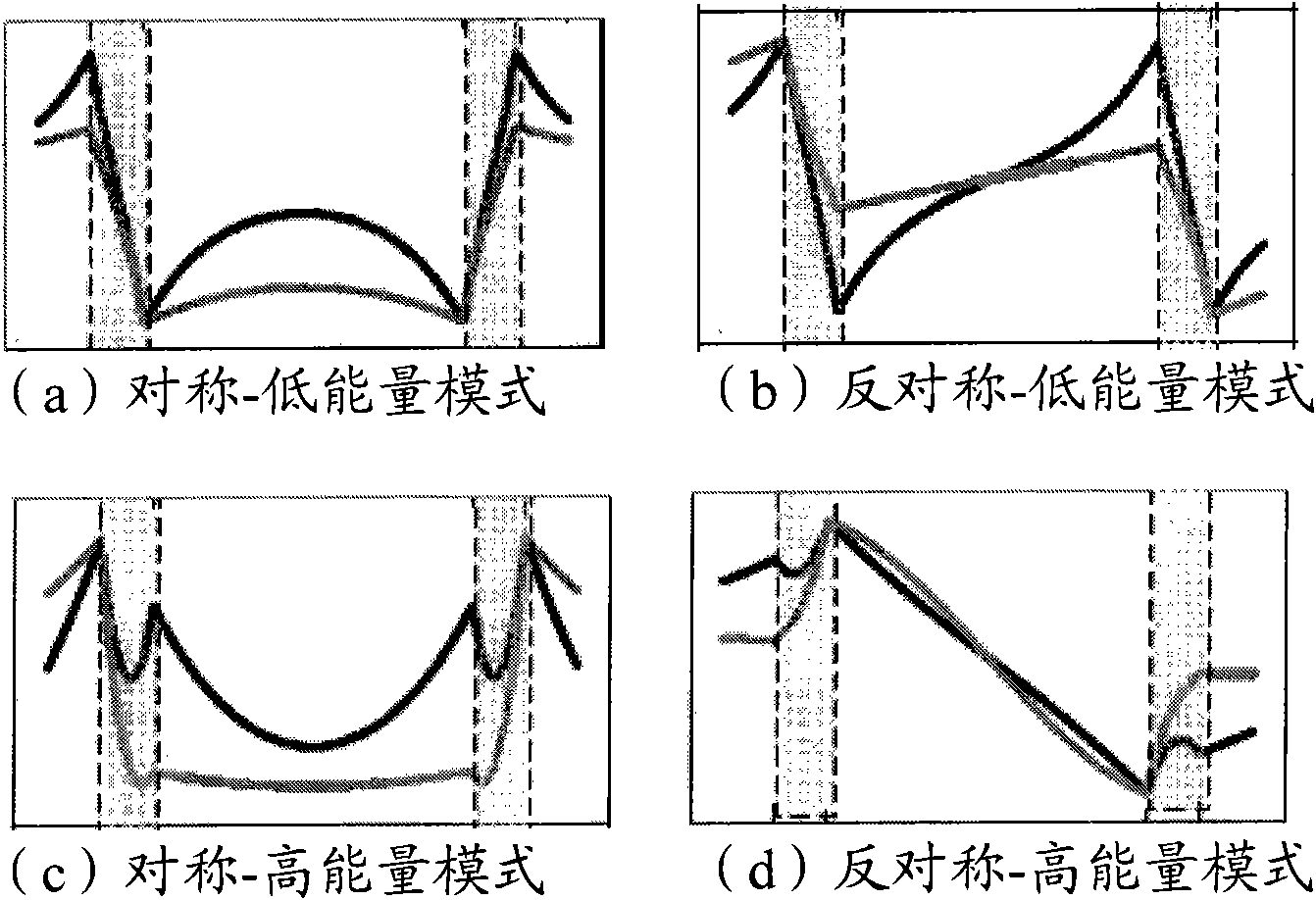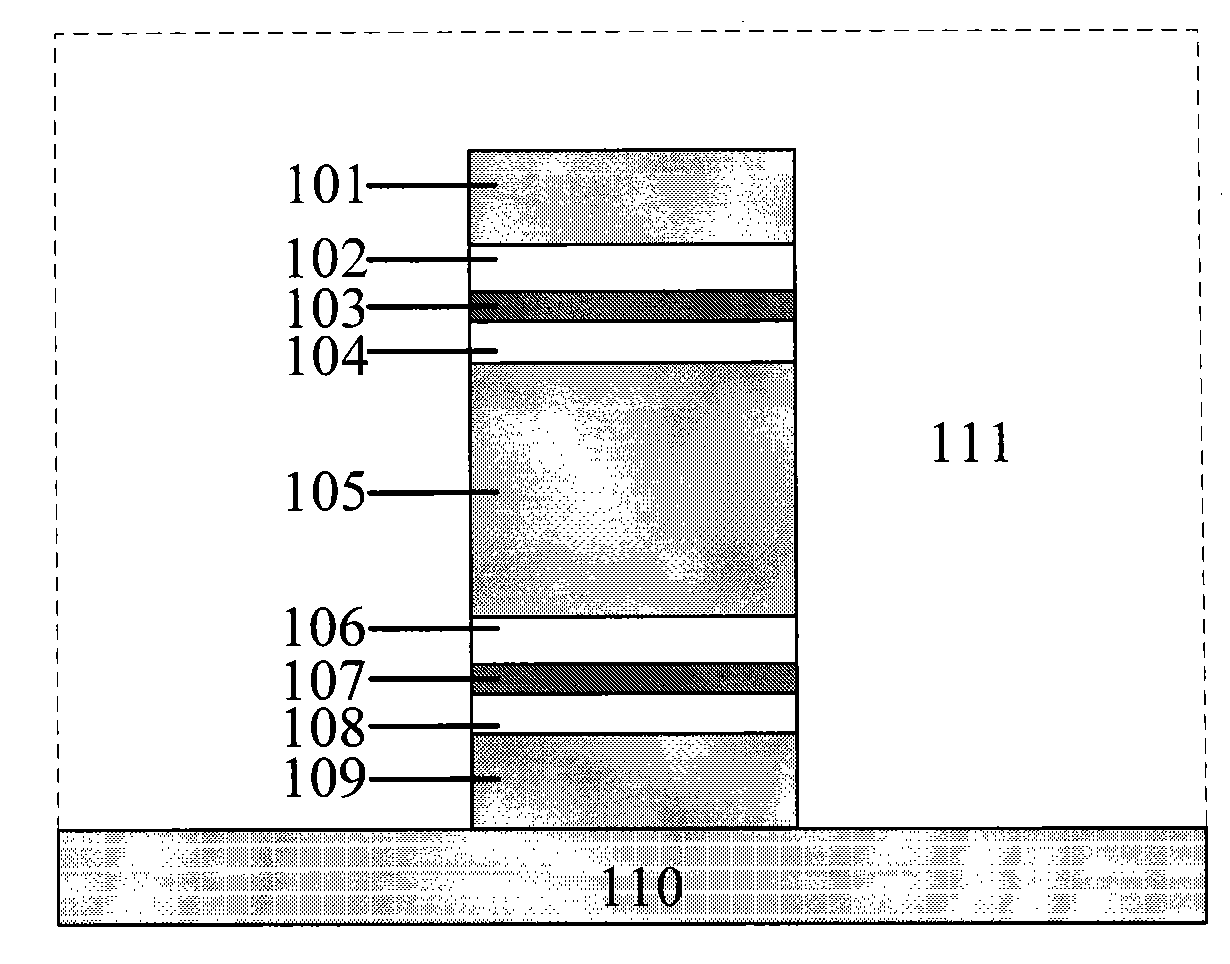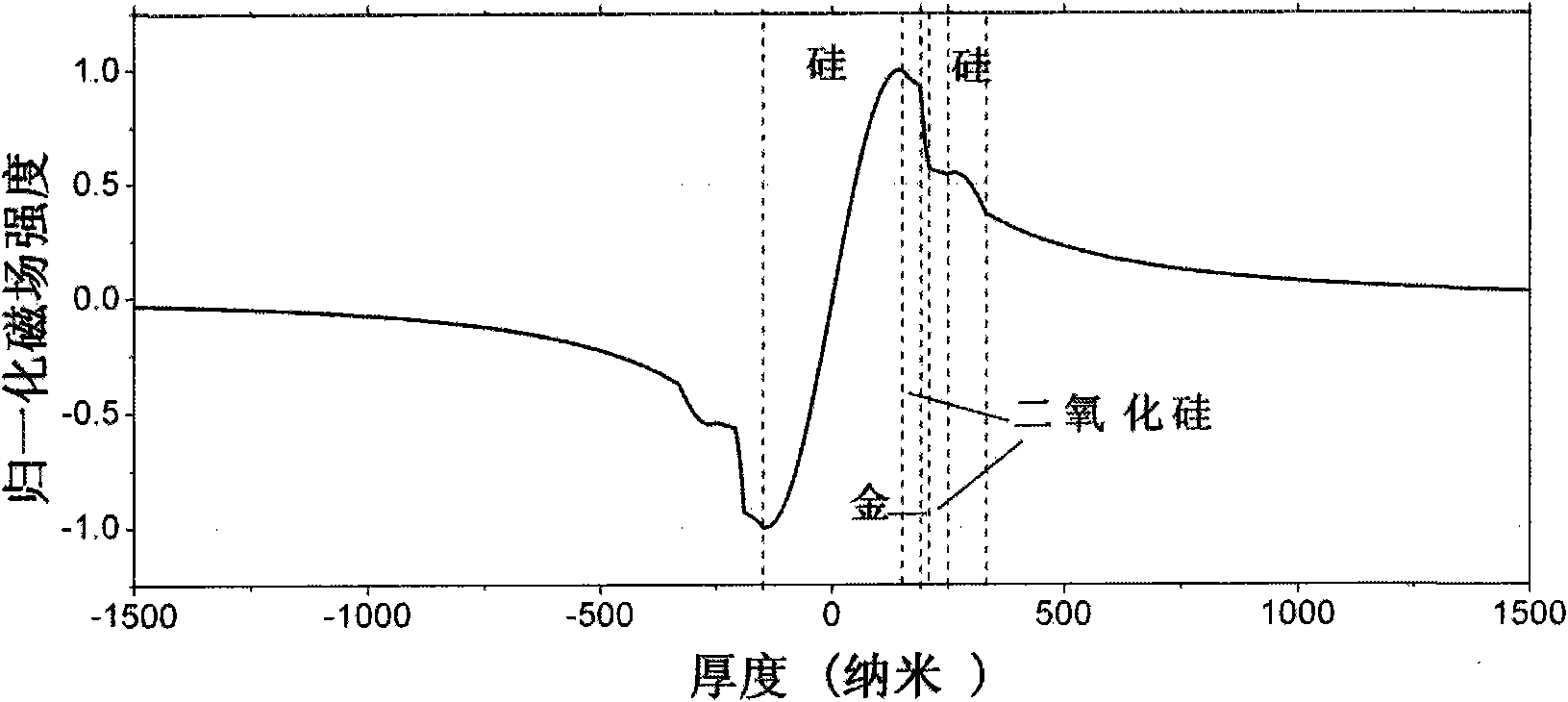Low-loss surface plasmon optical waveguide structure
A surface plasmon, low-loss technology, applied in the direction of optical waveguide and light guide, can solve the problem of large waveguide transmission loss, etc., and achieve the effects of good confinement, low effective refractive index, and flat dispersion characteristics
- Summary
- Abstract
- Description
- Claims
- Application Information
AI Technical Summary
Problems solved by technology
Method used
Image
Examples
Embodiment Construction
[0030] Two important indicators of surface plasmon waveguides are their field confinement ability and transmission loss. The field confinement capability can be determined by the effective mode field area A eff To represent, the expression is as follows:
[0031] A eff =(∫∫|E(x,y)| 2 dxdy) 2 / ∫∫|E(x,y)| 4 dxdy (1)
[0032] where A eff is the effective mode field area, and E(x, y) is the electric field of the surface plasmon wave.
[0033] The expression of transmission loss Loss is as follows:
[0034] Loss=20log(e)k 0 Im(N eff )≈8.686k 0 Im(N eff )(dB / m) (2)
[0035] where Im(N eff ) is the imaginary part of the effective refractive index of the mode, k 0 Indicates the wavenumber of light in vacuum. The size of the transmission loss determines the transmission distance of light in the medium. Transmission distance L p It is defined as the distance when the electric field intensity on any interface decays to the initial value l / e, and the relational expression...
PUM
 Login to View More
Login to View More Abstract
Description
Claims
Application Information
 Login to View More
Login to View More - R&D
- Intellectual Property
- Life Sciences
- Materials
- Tech Scout
- Unparalleled Data Quality
- Higher Quality Content
- 60% Fewer Hallucinations
Browse by: Latest US Patents, China's latest patents, Technical Efficacy Thesaurus, Application Domain, Technology Topic, Popular Technical Reports.
© 2025 PatSnap. All rights reserved.Legal|Privacy policy|Modern Slavery Act Transparency Statement|Sitemap|About US| Contact US: help@patsnap.com



